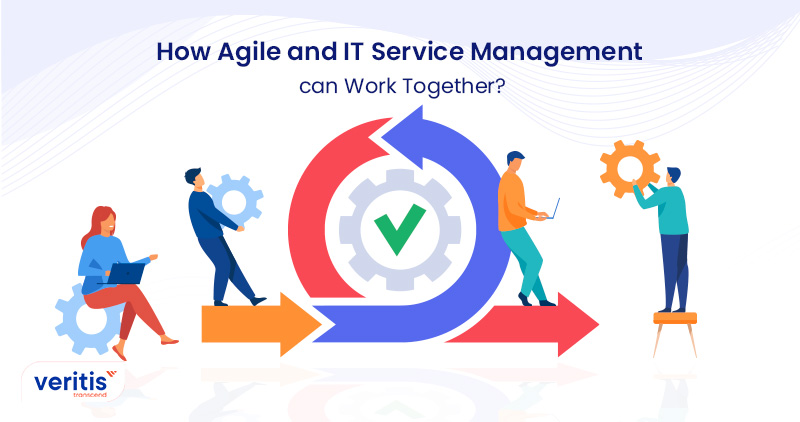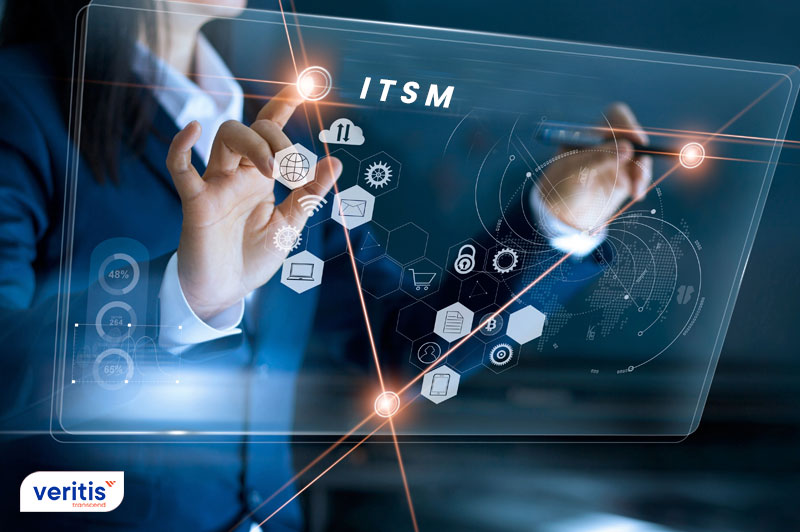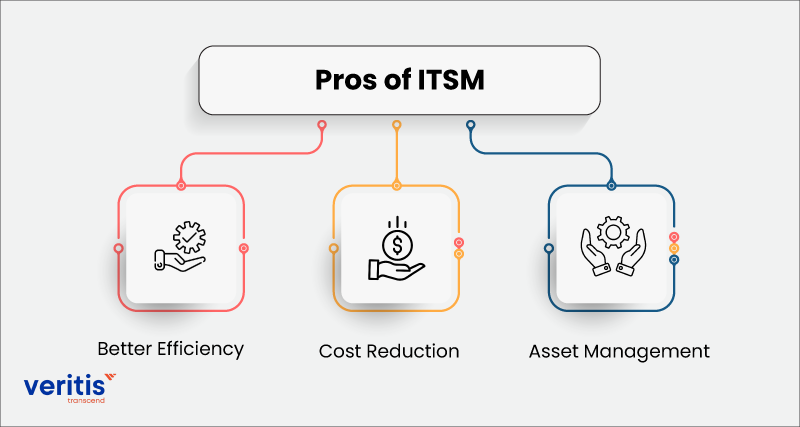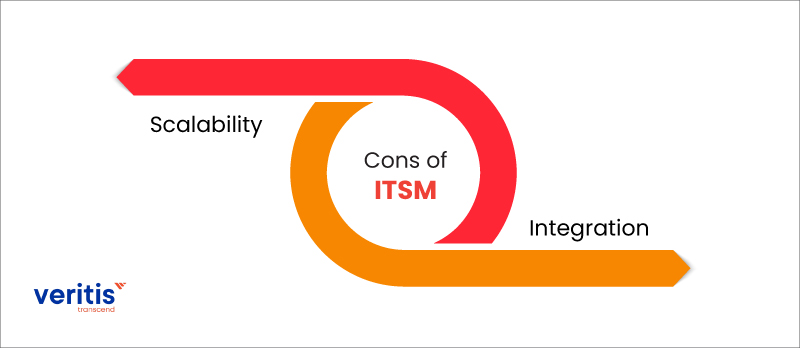
At first glance, the ITIL framework and the concepts that support Agile methodologies couldn’t be more dissimilar. Agile is all about being collaborative and flexible, while procedures and processes characterize ITIL. On the surface, Agile methods seem to accelerate delivery time, whereas the ITIL framework seems to put the brakes on things with its emphasis on processes.
Agile is an operational management approach that is intended for service delivery within IT businesses. It is not a strategy for creating software specifically. IT service management (ITSM) provides IT services, including application development. Unsurprisingly, Agile has been employed in ITSM since the early 2000s.
A survey by Digital.ai about the 15th Annual State of Agile Report revealed that 86% of companies using Agile development for IT teams and software development in 2021. Moreover, 66 percent of respondents said that Scrum is a widely used Agile approach.
Echoing similar sentiments for ITSM are other surveys. A survey by IT firm ManageEngine stated that companies are facing a new set of issues that weren’t previously seen as a high priority. Managing IT assets (46%), communication, and cooperation (41%) have emerged as the major issues, as three-fifths of the workforce now works in a hybrid mode.
ITSM and Agile software development have advantages, although their objectives occasionally conflict. It’s essential to balance individual, team, and company requirements when opting for the best model for your business. You must consider factors such as your core competencies, departmental organizations, culture, corporate structures, values, and history to determine which model will be most effective for your needs.
Useful link: ITIL vs DevOps: Can Both Concepts Work Together?
Agile is frequently described as an enhanced process, while ITSM encompasses all aspects of performance management. These two approaches have complemented each other. Agile software development models are well known for delivering increased productivity, more flexibility, and higher quality. At the same time, ITSM is vital for monitoring project governance and performance. Combining these two models enhances organizational performance in the best possible way.
Before delving deep into the article, let’s first explore the concepts of Agile and ITSM.
What is Agile?

Agile is a set of project management methodologies relevant to software development. It is the ability to innovate and adapt to change. Short-term development cycles use to carry out a project’s incremental components. The approach prioritizes speedy delivery, flexibility, and collaboration rather than top-down administration and sticking to a predetermined plan. It is all about iteration, experimentation, and speed.
Feature-Driven Development (FDD), Extreme Programming, and Scrum paradigms are a part of Agile software development. In addition, Agile software development encompasses various methods such as test-driven development, stand-up meetings, pair programming, and sprints.
In Agile techniques, there is continuous feedback, permitting team members to adapt to problems as they arise and stakeholders the chance to communicate consistently. Although the Agile approach was initially developed for software development, it is now widely employed in carrying out numerous different kinds of projects and in managing companies.
Useful link: Waterfall Vs. Agile Vs. DevOps- Which Production Method Should You Take?
Agile Pros and Cons

Any development methodology that aligns with the Agile manifesto’s ideas is called Agile development. Agile is more popular and has many benefits, but it is not without problems. Below are some of the advantages and challenges that Agile users already face.
| Agile Pros | Agile Cons |
| Ability to handle shifting priorities | Companies may be resistant to embracing change |
| Better alignment between IT and business | Requires assistance from management and leadership |
| Speed of delivery and time to market | Lack of documentation |
| Increased performance | Less predictability |
| Rapid delivery | Lack of overall cohesion |
Agile Principles and Frameworks
There is a wide range of Agile principles and frameworks; each has its advantages and disadvantages. Few are hybrids of multiple principles, and Scrum is the most popular Agile principle.
Popular Agile principles include:
- Scrum
- ScrumBan
- Scrum XP Hybrid
- Agile Waterfall
- Crystal
- Learn
- Kanban
- Dynamic Systems Development Method (DSDM)
- Extreme Programming (XP)
- Domain-Driven Design (DDD)
- Feature-Driven Development (FDD)
Useful link: Why Should You Adopt DevOps and What are the Benefits it Offers?
Scaling Methods
Agile scaling processes are implemented across numerous teams using Agile scaling methodologies.
There are multiple scaling principles, and they include:
- Lean Management
- Enterprise Scrum
- Nexus
- Scrum of Scrums
- Agile Portfolio Management (APM)
- Scaled Agile Framework (SAFe)
- Large Scale Scrum (LSS)
- Disciplined Agile Delivery (DAD)
What is ITSM?

IT Service Management, also known as ITSM, is all about how IT teams to control the complete delivery of IT services to clients. This includes the entire process of designing, developing, delivering, and supporting IT services. The central pillar of ITSM is the idea that IT should be provided as a service. For instance, a different ITSM scenario would involve requesting new equipment, such as a laptop. Your request would be submitted using a portal, creating a ticket with all necessary details, and starting a reoccurring cycle. Afterward, I would add the ticket to the queue for the IT department, where incoming requests are prioritized and sorted.
ITSM ensures the procedures, people, and appropriate technology are in place for a company to achieve its long-term principles. ITSM boosts customer satisfaction by enhancing the quality and speed of service delivery. Some companies use ITSM software to manage a wide range of internal business processes and services across the enterprise to manage and support their IT infrastructure.
Pros of ITSM

Better Efficiency
Even the best staff members in your company will eventually perform better if they have access to the right tools. A well-equipped ITSM tool can guide them to identify information quickly, organize reports flawlessly, and stay up to date. In addition, these tools make fantastic workflow management software, which benefits the company’s overall work processes.
Cost Reduction
The most significant advantage of employing ITSM tools is that they guide you to save money for your business. Employee productivity soars, and they gain many advantages when such a framework is employed. Tasks are completed more quickly, and output is improved. This ultimately aids in cutting operating expenses.
Asset Management
Asset management inside the company can be enhanced by adopting a proper ITSM tool. Hardware assets such as servers, printers, software assets, and workstations like firewalls and paid software can be monitored, and tracking their usage can be more accurate. In addition, it is possible to immediately report any alterations made to or damages sustained by IT assets. This can assist in improving the performance and longevity of such IT assets.
Useful link: ITOps vs DevOps vs NoOps Comparison: The Top 3 Power Tools in the Software Era
Cons of ITSM

Scalability
Specific ITSM tools that don’t provide good scalability. Large organizations and those businesses going through a quick expansion phase may have more of a problem with this. Long-term, this may also turn out to be unproductive.
Integration
Not all IT-related services and applications used in a business can be integrated or are compatible with all ITSM frameworks. For instance, some frameworks may not support specific cloud platforms, web-based services, or OS. Therefore, if your company depends on employing a certain software or web service, verifying compatibility with an ITSM solution will be essential.
Agile and ITSM Can Work Together?
There is no guide you may use to begin working agilely. First, it needs a cultural shift within the enterprise. The most significant change is that your company begins to embrace change. When working according to the traditional approach, you try to minimize modifications.
With an Agile mindset, you can anticipate that your plans will alter. You won’t stick to the same plan for two years. Although you are sure of your result, you can still make a tweak. Agile is all about continuous improvements.
Start at the beginning when you first work in an Agile environment. First, compare your existing offerings in light of potential alignment with modern, Agile values. Then, if users have any long-term problems, begin and apply the Agile process.
Conclusion
Agile and ITSM depend on cross-pollination between developmental and operational teams, collaboration, and effective communication across the company. ITIL can offer your company a stable framework, while Agile can guide you to improve service levels and execution. More importantly, ITIL and Agile can coexist without much conflict.
Agile and ITIL can work well together because this combination enables IT firms to adopt a new culture known as Agile ITSM. ITIL will provide a framework for reliable and quick service delivery with quality assurance, while DevOps will ensure a constant stream of enhancements.
Agile ITSM may offer recommendations for service and fast delivery in an Agile approach because Agile/DevOps and ITIL principles work together! Veritis, the Stevie Awards winner for DevOps excellence, are the preferred choice for many enterprises from small to large organizations, including Fortune 500. Our team of experts offers cost-effective solutions which don’t hamper the quality, and we are keen to stay future proofs. So, reach out to us with your unique requirements, and we shall provide you with a customized solution.
Explore Enterprise Service Management Got Questions? Schedule A Call
Additional Resources: